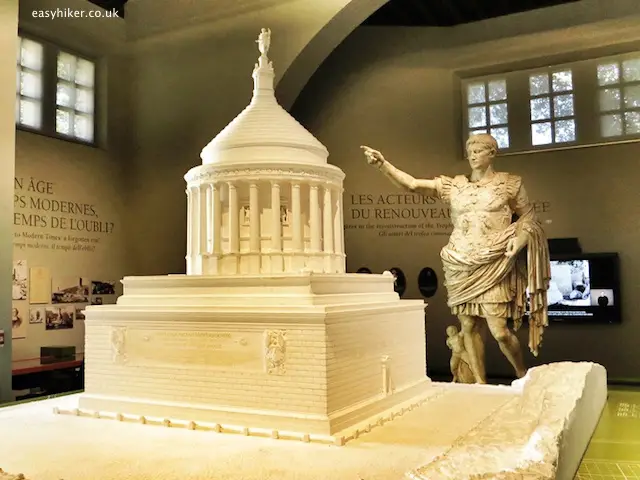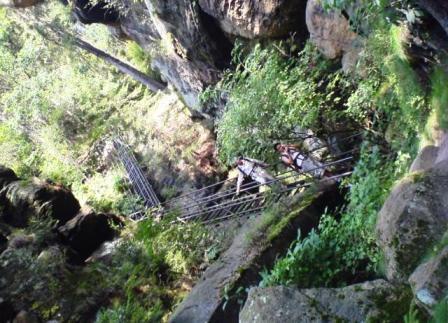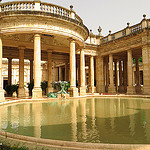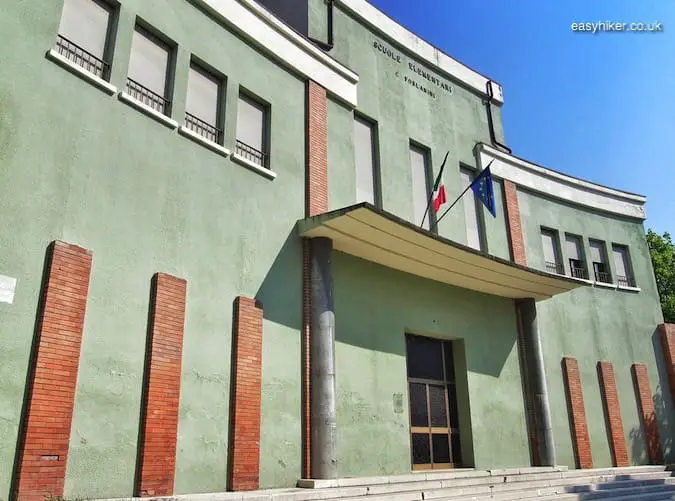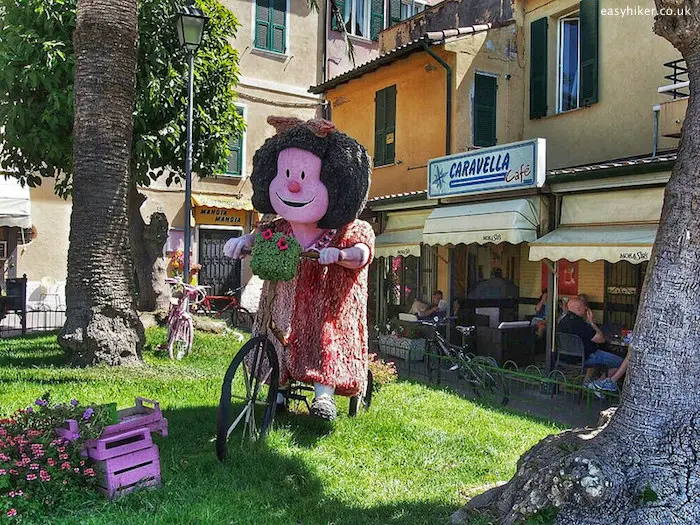In this week’s trip around Vienna City of Music, we shall leave the Austrian capital’s city centre and stay on its periphery before we branch out, encountering different faces of residential Vienna.
As always on these city walks, you should keep your eyes open – there is much to discover. All large cities – not just the City of Music – like to riff and improvise on their underlying leitmotifs, and the results can often be quite jazzy.
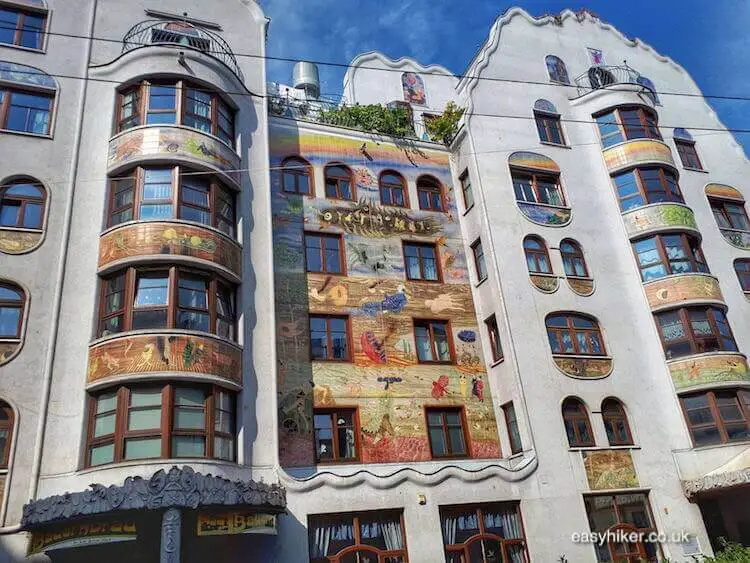
Our Vienna Walk with Bethoven, Schubert, et al
We start this Vienna walk near the Schottentor subway station and walk down Schottengasse before turning right into Mölkerbastei.
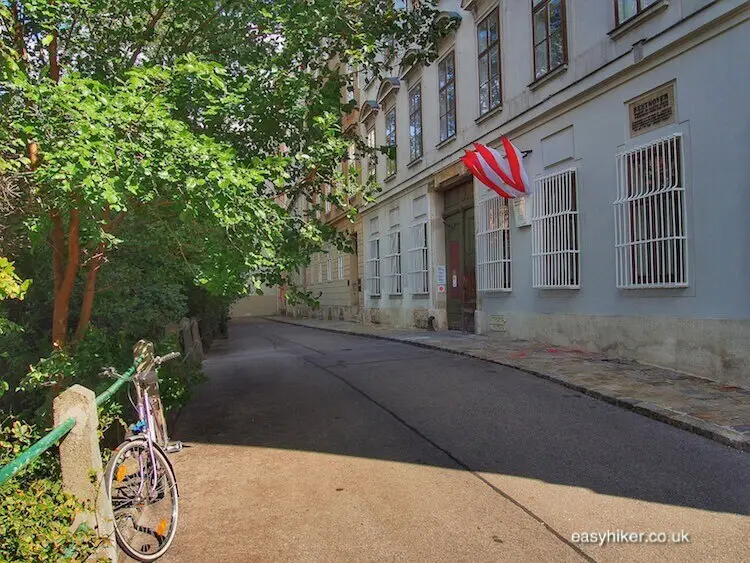
Unlike Mozart, an urban creature who loved the hustle and bustle of Vienna’s downtown area, Beethoven was a small-town boy and always in search of a little peace and quiet.
He used to spend his summers in the countryside and would return to the big city only during the long and cold winters, engaging in the 19th century’s version of “sofa surfing” at the residences of wealthy friends and sponsors (“guest house surfing”, more like).
Consequently, Beethoven is associated with nearly 70 addresses in Vienna (Mozart only managed twelve), which means that it is rare to find a place to which he returned over and over again.
Such a rare place is the Pasqualati House on Mölkerbastei 8, owned at the time by Johann Baptist Freiherr von Pasqualati, one of his patrons, where Beethoven lodged for several weeks at a time each year between 1804 and 1814 and where he composed several of his most famous works including the piano piece “Für Elise”.
The Pasqualati House – now a Beethoven museum – is surrounded by a pretty ensemble of 18th century buildings and cobblestoned streets on what is one of the few remaining sections of Vienna’s old city wall.
Immediately below, on this Vienna walk, you will find the Dreimäderlhaus, the “House of the Three Girls”, …
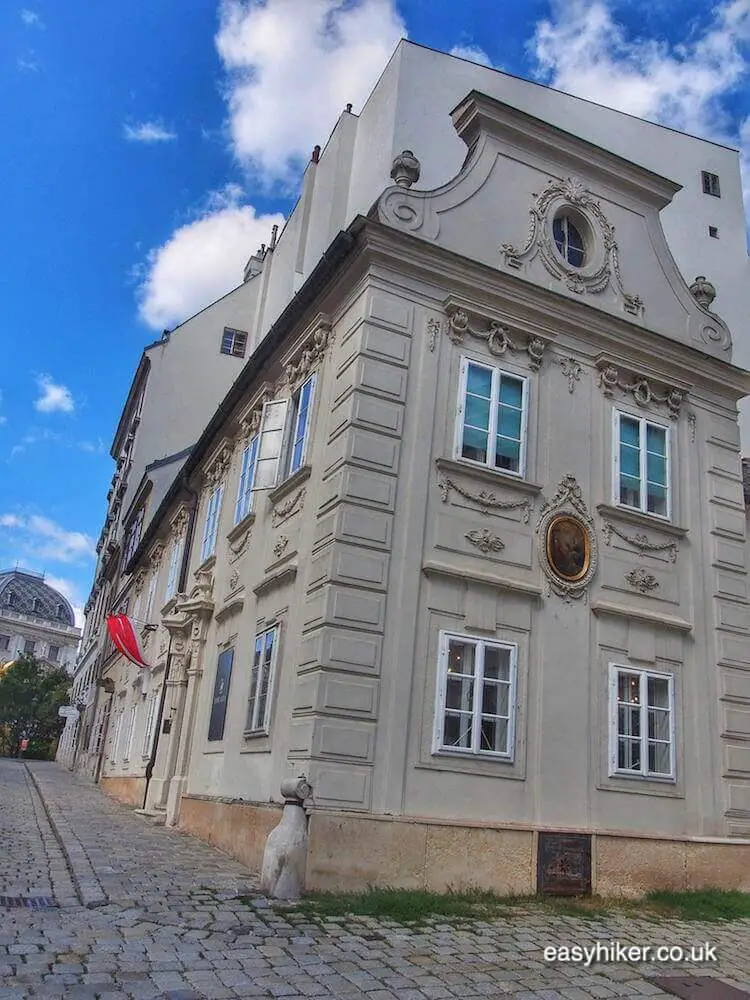
… said to have been visited many times by Franz Schubert who fell in love with – depending on whose account you trust – one or all three of the pretty sisters who grew up here. (One can only hope that he did not infect the girls with the VD that would eventually kill him at the tender age of 31.)
The story (minus the syphilis, it goes without saying) provided the base for a highly popular 1916 operetta (“Das Dreimäderlhaus”) that was built around Schubert’s life and music. The English-language version (called “Blossom Time” in the US and “Lilac Time” in the UK) was equally successful at the time and is now equally forgotten.
Walk down to the busy Universitätsring. Continue counter clockwise on Ringstrasse past the grandiose pomp of late-Imperial Vienna including City Hall (the building ahead on your right), Parliament and the Opera House.
You will then reach one of Vienna’s most popular places for an improvised picnic: the lawn just behind the entrance to the Stadtpark where you can relax for a while under the benign supervision of Johann Strauss.

If you want to find out more about Johann Strauss, you have to go to Praterstraße 54 in the 2nd Stadtbezirk (now a museum), where the Waltz King composed some of his most famous works including the “Blue Danube Waltz”.
A few steps from there, at Praterstrasse 72, another famous musician was born in 1888: Max Steiner, one of Hollywood’s most successful film music composers (whose credits include “Gone with the Wind” and “King Kong”, the first “continuous score” in movie history).
More trivia: it was Steiner’s grandfather, one of Vienna’s most successful theatrical impresarios, who persuaded Johann Strauss to write for the stage. (And Steiner’s great-grandfather had been responsible for building the ferris wheel in the Prater.)
Just south of the Stadtpark, down Lothringerstrasse, you will find the Wiener Konzerthaus, which was planned in the early 20th century (it was completed in 1913) as a musical venue for people who would not necessarily attend traditional, “evening-dress-only” events.
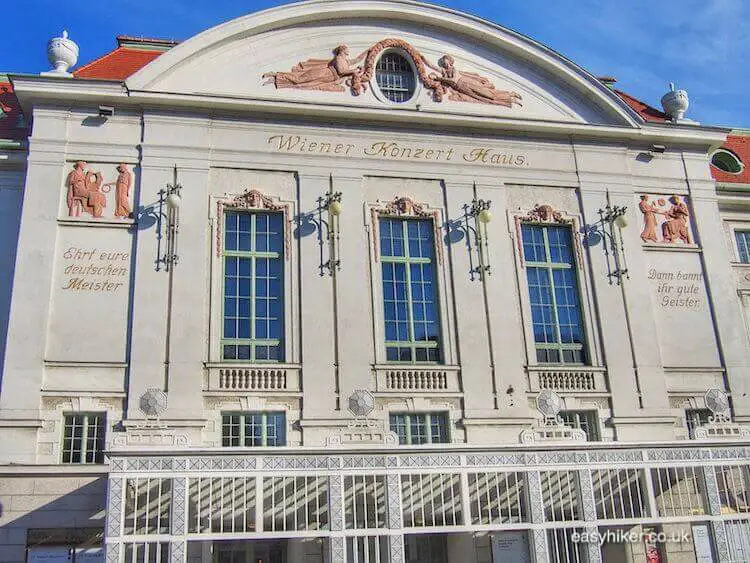
Although original plans of an open air, 40,000-seat-multi-purpose arena were never implemented, the Konzerthaus became – in the roaring 1920s – Vienna’s epicentre of modernity, hosting performances of Schönberg and Korngold (another Viennese composer who eventually found fame and fortune in Hollywood) as well as jazz and pop concerts, dance marathons and boxing fights.
From Lothringerstrasse, turn right into Schwarzenbergplatz and left into Auenbruggergasse where – in house number 2 – Gustav Mahler spent the most fruitful years of his life (from 1898 to 1909), during which he wrote most of his great works such as his later symphonies (numbers 4 to 10) and the Kindertotenlieder.
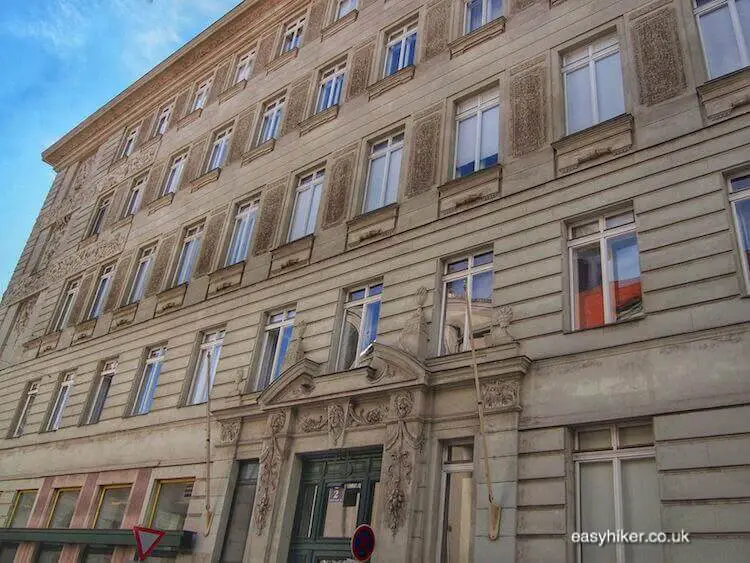
Mahler had come to Vienna as the musical director of the Opera House. During his lifetime, he was always considered a conductor first and a composer second and had to make time for writing music during a busy international career that took him across Europe and even to New York. (The building was constructed by the early modernist architect Otto Wagner, more of whom here).
Now cross the square on the far side of Schwarzenbergplatz, turn left into Gusshausstrasse and right into Technikerstrasse for the monumental St Charles’s Church (Karlskirche).
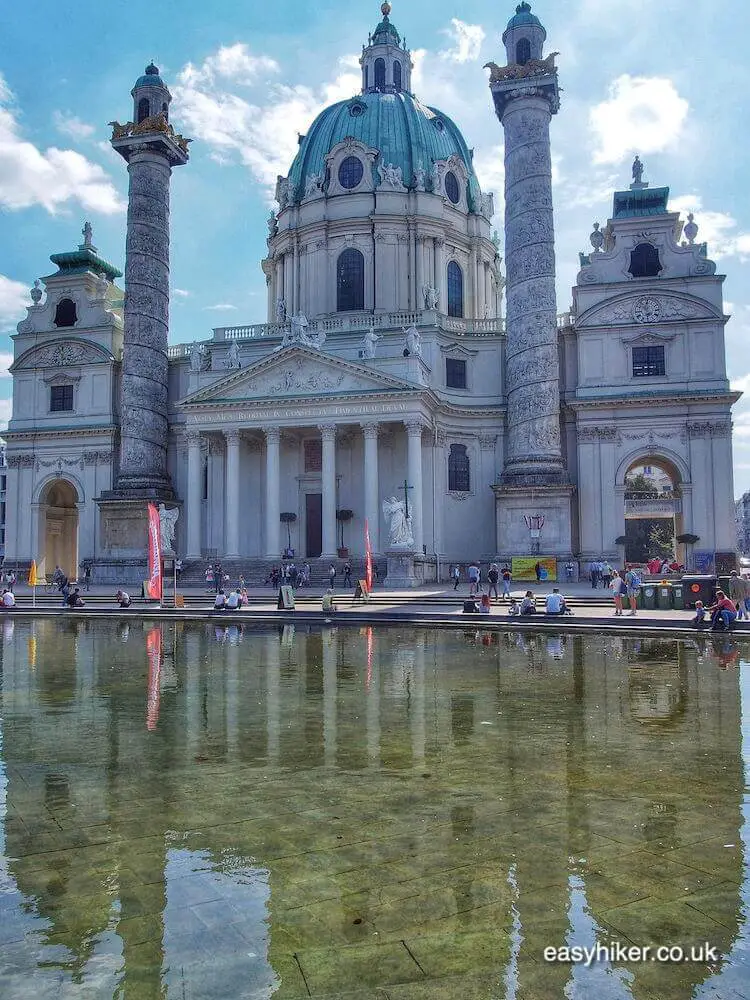
This is where Antonio Vivaldi lies buried (although nobody knows exactly where) and where Gustav Mahler married Alma Schindler on 9 March 1902, a match that would eventually turn into one of contemporary Vienna’s most scandalous marriages.
Alma – offspring of a wealthy family, femme fatale and muse to many famous artists – received her first kiss from the painter Gustav Klimt and had affairs with the composer Alexander von Zemlinsky (a close friend and brother-in-law of the radical modernist Arnold Schönberg) and later with the painter Oskar Kokoschka, one of Viennese art’s “wild men”.
While she was still married to Mahler, Alma also started a liaison with Bauhaus architect Walter Gropius, and a deeply hurt Mahler is known to have consulted Sigmund Freud over his fears that his own strangling of Alma’s musical career – a gifted composer in her own right – had contributed to the unhappy unfolding of events.
Alma went on to marry Gropius and, after their separation, the writer Franz Werfel – “The Song of Bernadette” – with whom she later emigrated to New York. She eventually became a central figure in the transatlantic Mahler revival of the 1950s and died in 1964 at the age of 85.
Walk to the far side of the Naschmarkt food market and continue on Linke Wienzeile, which, until the end of the 19th century, overlooked the left bank of the river Wien that gave the city its name. (The river nowadays flows underneath the streets of Central Vienna.)
At no. 6, you will find the Theater an der Wien, …
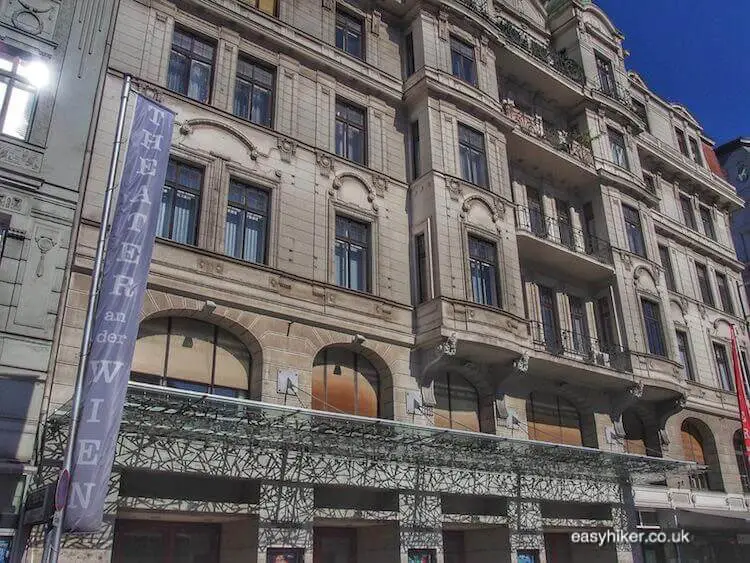
… Vienna’s first ever playhouse that was designed for a middle class, paying audience.
The theatre – with more than 1,100 seats – was one of Europe’s largest when it opened in 1801 (it was a commercial venture, not an aristocrat’s plaything) and the brainchild of Emanuel Schikaneder, who must have been the Max Bialystock of the Viennese stage.
In its early years, the theatre was known as Beethoven’s “home from home”: many of his works were first performed here, he composed here and, occasionally, even lived here. Other than that, the Theater an der Wien is mainly famous for its premieres of lighter fare such as “The Merry Widow” and Johann Strauss’s “Die Fledermaus”.
The Theater an der Wien was the place where the “Age of the Bourgeoisie” in the Arts reached its first zenith, but this New Age had already dawned a few decades before. To find the place where it all began, we have to cross the Naschmarkt back again into Faulmanngasse for the crossing with Operngasse.
Somewhere close to the block of nondescript post-war buildings on your left is the place where Schikaneder’s first theatre, the ‘Theater an der Wieden’, once stood between 1787 and 1801, straddling the modern street plan across the road in a line between numbers 23 and 32.
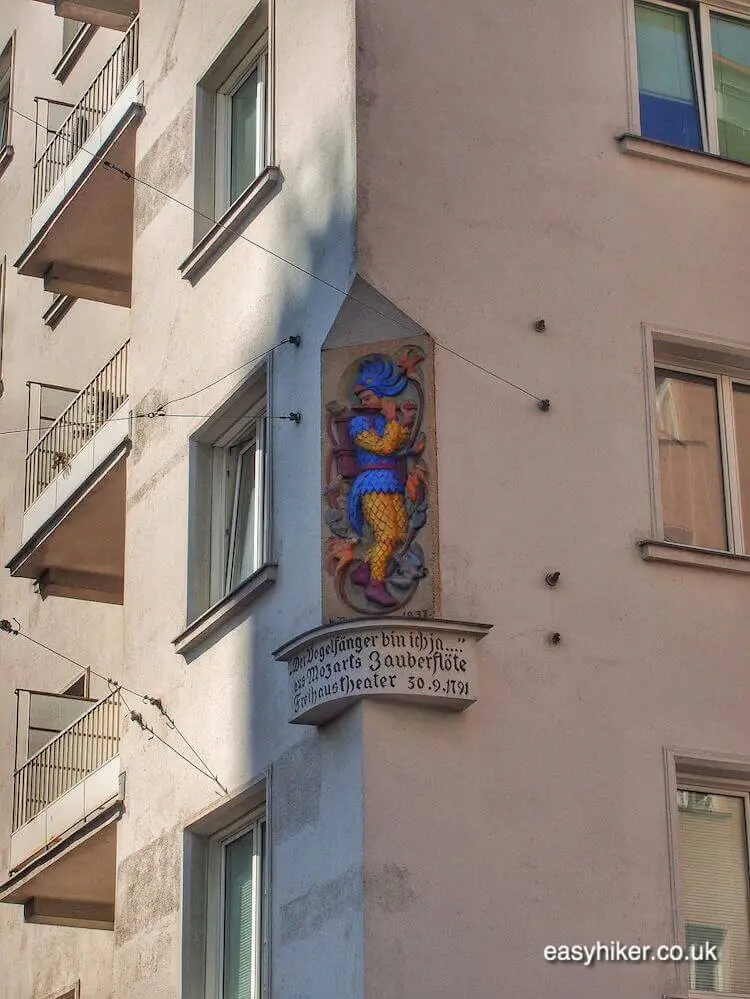
The venue’s most successful show ever was the “Magic Flute” which premiered here on Sept. 30, 1791, featuring Mozart as the conductor and Schikaneder himself as Papageno (he also wrote the libretto). “The Magic Flute” went on for 223 performances, not bad for a theatre that cramped 350 theatrical works into its short life span of 14 years and averaged a new play every two weeks.
After Schikaneder moved into his new premises, the theatre building was converted into tenements and eventually razed. Schikaneder is remembered on the house front of Operngasse 26 …
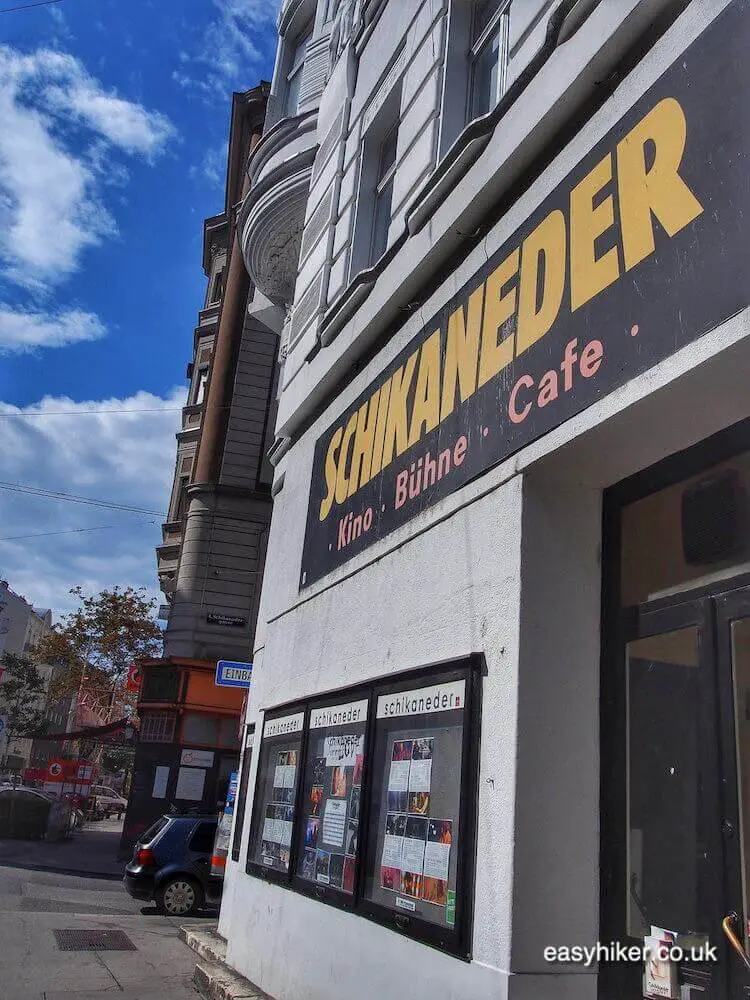
… but more appropriately in the name of a near-by cinema-cum-cabaret-cum-speakeasy. One can’t help feeling that this is what the old wheeler-dealer would have appreciated more.
Turn right into Operngasse/Margaretenstrasse and, after a while, right again into Kettenbrückergasse. Number 6 is the house where Franz Schubert died on 19 November 1828.
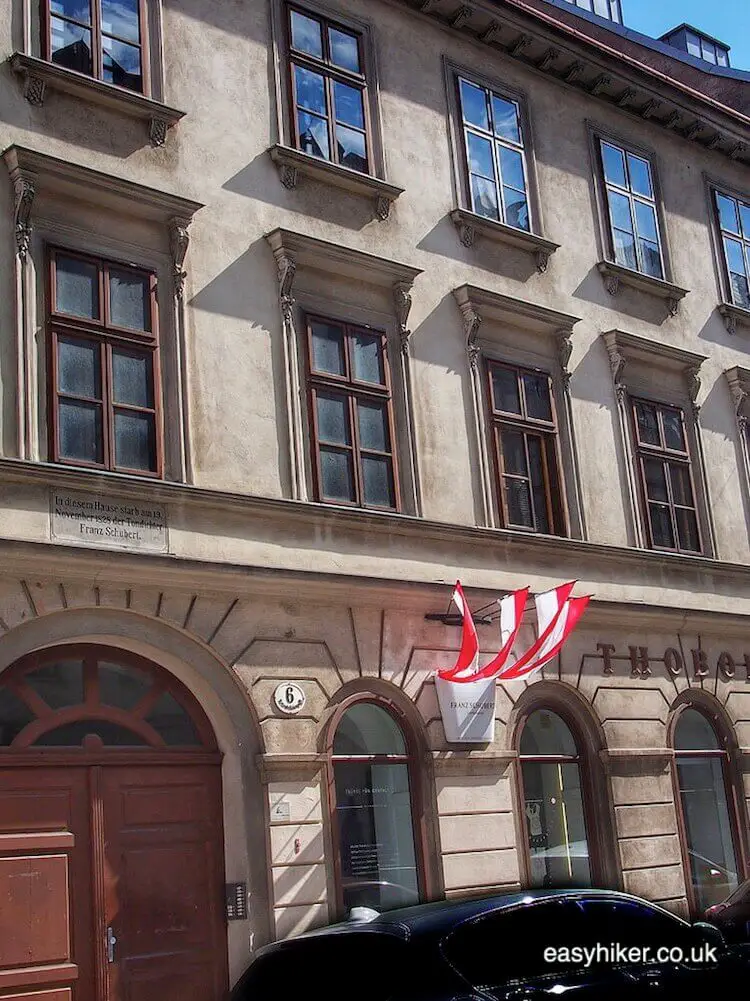
The house – in what was then Vienna’s semi-rural outback – belonged to Schubert’s brother who had provided the dying Franz with a small and austere flat of his own (now a museum).
You can either end this Vienna walk here or, if you are up for it, proceed – via Schönbrunner Strasse and Hofmühlgasse – for the Haydn Museum in Haydngasse.
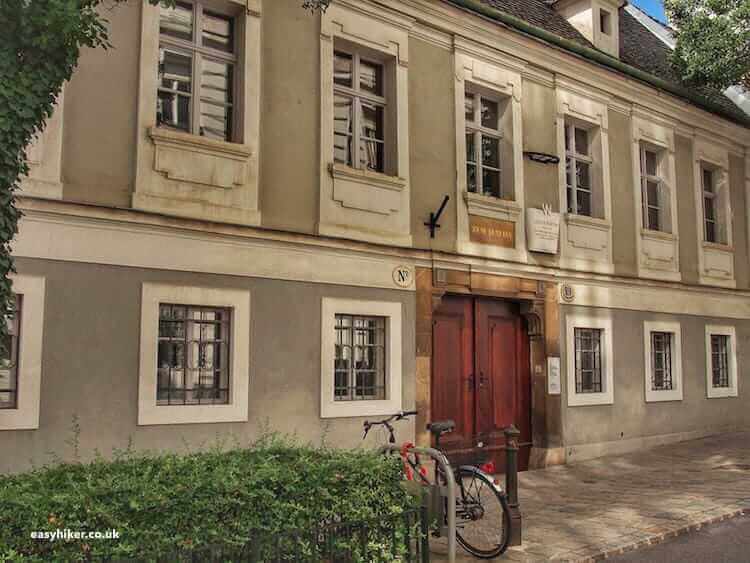
Joseph Haydn had bought this house with the earnings from his financially successful series of “gigs” in London and would spend the last twelve years of his life here in the (by the standards of the time) remote village of Gumpendorf, now Vienna’s lively Mariahilf District.
On this Vienna walk, you can also visit the parish church (St Aegyd) where the composer’s funeral rites were held – a small private function rather than the large official funeral that he and his fame would have deserved because Austria, at the time, was at war with France and Vienna was occupied by Napoleon’s Grande Armée.

